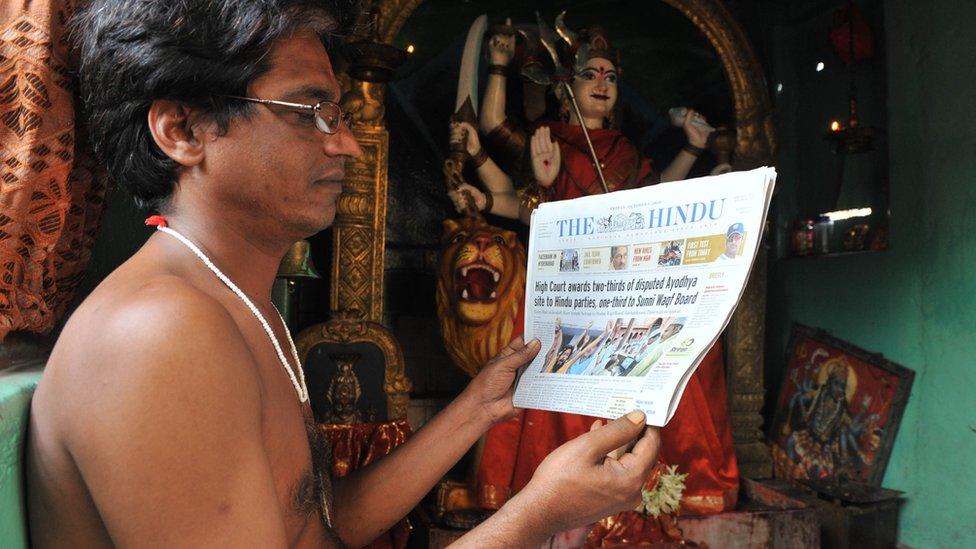Viewpoint: Why poor planning leads to floods in Chennai and Houston
- Published
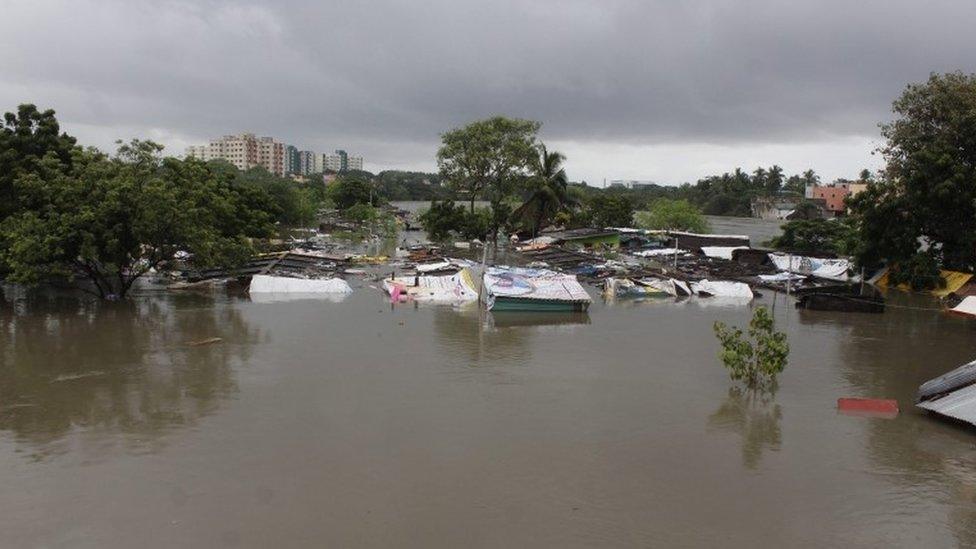
Much of Chennai has grown without a plan and with no regard to water flows
The recent floods in Houston and Mumbai, and the December 2015 floods in Chennai are previews of what a disaster could look like when climate change and ill-advised land-use change collide.
All three cities are economic powerhouses in their own right. All three have prioritised unbridled growth and urbanisation over caution and better sense. All have paid a heavy price for their choices.
None seems to have learnt any lessons beyond perhaps treating disastrous flooding as the new normal. This failure to learn may have more to do with who suffers and who gains from the choices made rather than an inability to learn.
To cope with increasing population - nearly two million extra residents added since 2000 - Houston has spread concrete over coastal prairie that used to absorb the rain, according to the Economist magazine, external. Media investigations reveal that since 2010, Harris Country has allowed more than 8,600 buildings to be constructed on a century-old floodplain.
In India, Chennai's story is particularly telling about how governments beholden to an unhelpful growth logic actively make a bad situation worse.
Despite monsoon rains paralysing the city in 2015 and flooding after a cyclone last December, Chennai has refused to let adversity force it into correcting its course of development.
Like Houston, Chennai is built on flat coastal floodplains. Wetlands - including natural and artificial drains such as rivers or the slow-moving bayous in the Houston prairies, streams and canals, and water bodies such as ponds, lakes and backwaters - are the city's insurance against heavy rains and cyclonic storm surges.
A study done by Chennai-based research group Care Earth revealed how the city's built-up area grew nine-fold - from 47sq km in 1980 to 402sq km in 2012 - even while area under wetlands declined from 186sq km to 71sq km during the same period.
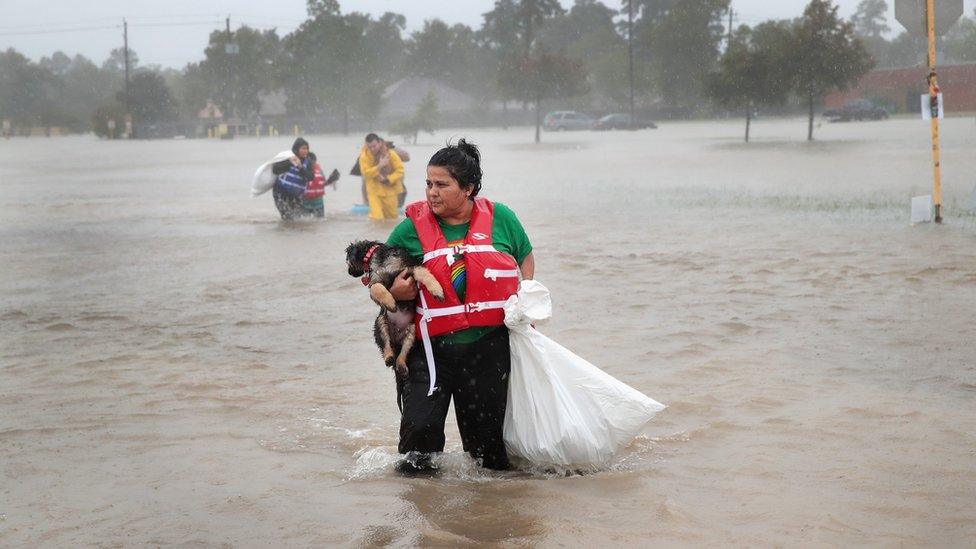
The intensity of rain in the Houston area is also being linked to unbridled construction
A parliamentary committee that enquired into the cause of the 2015 floods was categorical in its report, external that "encroachment of lakes and riverbeds played a major role in causing massive floods in Chennai".
It noted that the lessons from Chennai floods were an "eye-opener" for other cities, and urged the government to "check mafia" involved in the "illegal business of usurping water bodies for real estate business".
Far from checking the mafia, the government of Tamil Nadu, the state of which Chennai is capital, has continued to merrily parcel away hydrologically sensitive wetlands - an effective natural flood control mechanism, allowing excess river water, for example, to disperse over large areas.
The Ennore creek is a sprawling 8,000-acre (3,237 hectares) wetland at the northern edge of Chennai. It also absorbs the floodwaters of the Kosasthalai, one of the three rivers that flow through the city, before draining it into the Bay of Bengal.
Encroached land
Between 1996 and 2015, more than 1,000 acres of this wetland was allegedly illegally diverted to accommodate industrial installations belonging to state-owned companies, including a large port and several coal-fired power plants.
In June 2017, authorities allegedly violated laws, relied on fraudulent maps , externaland allowed a proposal by state-owned Kamarajar Port to convert 1,000 acres of the backwater into industrial real estate - car parking terminals for export-bound automobiles, coal yards and warehouses.
Chennai is far more densely populated than Houston. At least a million people, predominantly working class and poor, live just along the tailend catchment of the Kosasthalai river and the Ennore creek. It is this population that will bear the increased risk of flooding caused by existing and proposed encroachments.

Last year's cyclone brought heavy rain and winds of up to 140km/h in Chennai
Flooding is not the only concern. As Storm Harvey demonstrated in Houston, the flood risk can also magnify the threat of chemical accidents.
In Chennai the Manali industrial area - home to a huge petroleum refinery and dozens of petrochemical companies - falls squarely within Kosasthalai's floodplains.
The 2015 rains crippled the neighbourhoods drained by the creek. Some went under because power plants, coal ash ponds and coal yards blocked the flowing run-off from their habitations to the creek. Others were harmed by waters backing up far inland because their natural holding area - the backwaters - had been eaten into. The floods brought the refinery to a halt.
Discrimination
In an interview to New York Times, Texas author and former Houston resident Larry McMurtry is quoted as saying: "Houston is a very resilient city, and it will overcome."
Such remarks hide a truth that is mired in discrimination along race, caste and class lines. It is only the urban elite that are resilient and capable of bouncing back. The poor exhaust decades of built-up resilience in just one such catastrophe, and may lack the stamina to recover and rebuild.
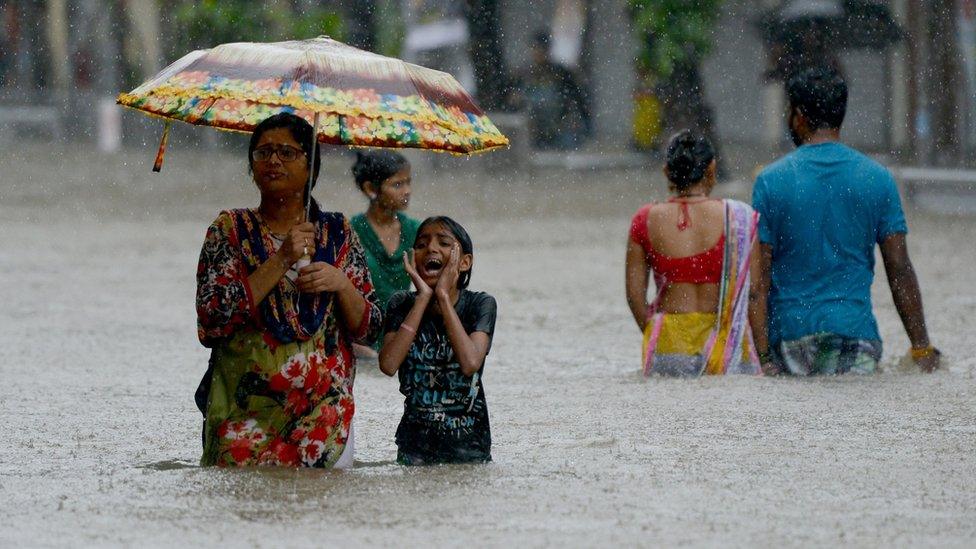
More than 20 people died in the monsoon rains in Mumbai in August
Chennai's 'perfect storm' is yet to come. When it does, the actions of today's decision-makers will play out their consequences with deadly predictability on the lives of the city's poor.
Nityanand Jayaraman is a Chennai-based writer and social activist
- Published3 December 2015
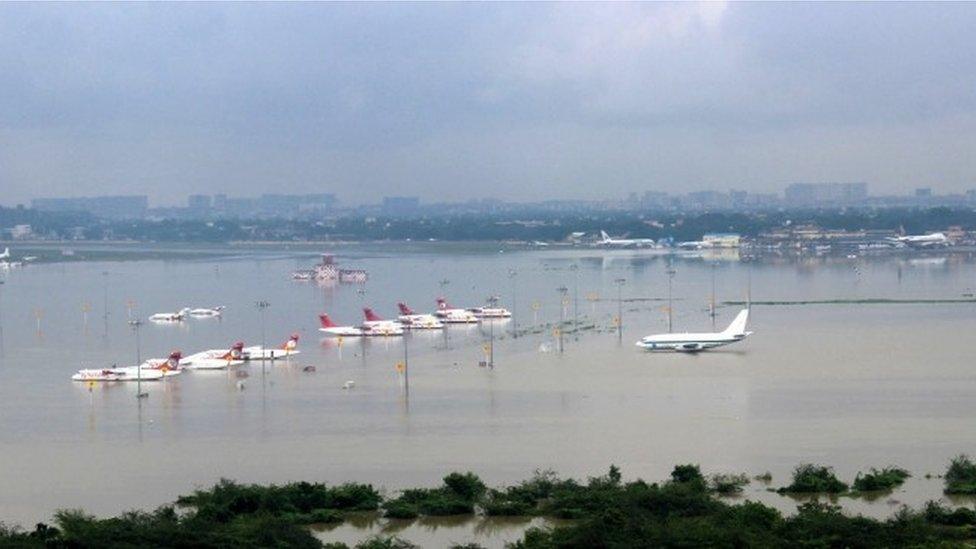
- Published2 December 2015
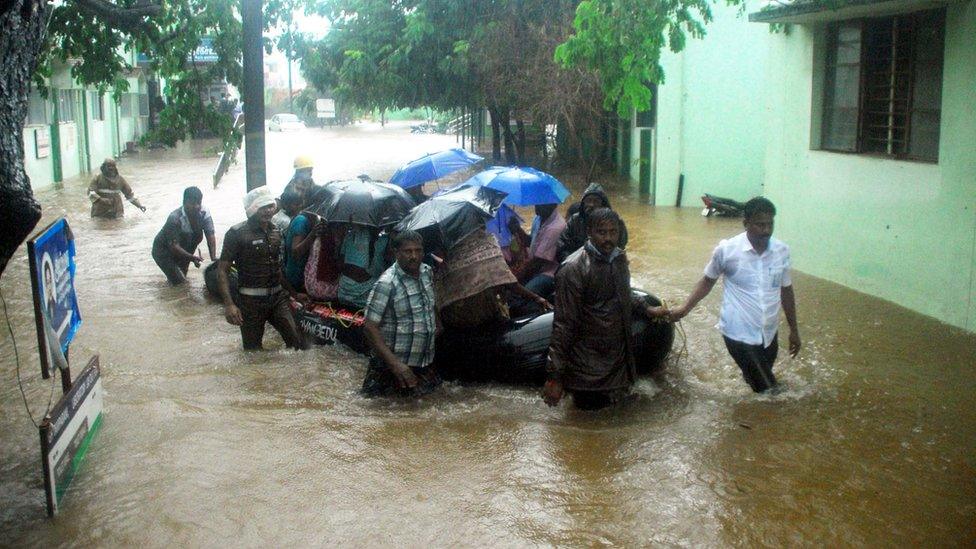
- Published2 December 2015
